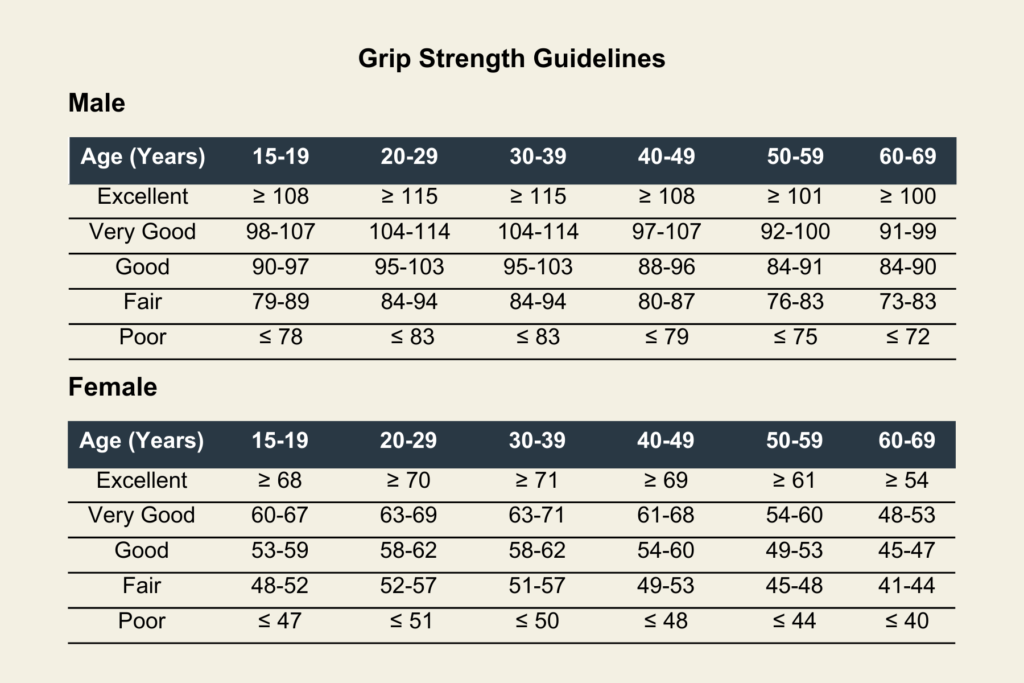
Most of us know how much we weigh or have a good idea of a range. But do we really know what our body weight consists of? Probably not.
That’s where body composition analysis comes into play. Your body composition is a measure of the amount of fat, bone, muscle, and water in your body, and it is a key component for maintaining good general health and longevity.
Looking at your weight often is not the best way to assess health because it only indicates how much total mass you have, not what makes it up. BMI, or body mass index, is another measure that is misleading because it only evaluates weight compared to your height.
Two people could weigh the same amount and be the same height but have very different health outcomes. This is due to their individual body compositions. Say one person has a high percentage of muscle mass contributing to their overall weight while the other has a high percentage of fat and not much muscle—overall weight for the two is the same amount, but one is healthier than the other.
As we age, it is normal for our bodies to increase in fat mass and decline in both bone and muscle mass. Individuals with a high body fat percentage are at a greater risk of developing cardiovascular diseases, type 2 diabetes, several types of cancer, and early mortality. (PubMed)
Grip strength is another important marker when it comes to predicting overall health. It is measured by squeezing a handheld dynamometer and can be used to assess overall muscle strength and to diagnose sarcopenia, a progressive loss of muscle mass and strength as a natural part of aging.
Maintaining muscle mass as we age is important, as it helps with mobility, balance, and strength, which can help prevent falls and reduce the risk of chronic conditions like diabetes and heart disease.
Establishing your baseline of these measures, identifying areas of improvement, and monitoring progress is key to helping you improve your quality of life. This is our focus at Griffin Concierge Medical, and our personal, proactive approach lets us address your specific health concerns and risks using the latest technology.
Let’s break down the components to better health and dive into ways we can help you realize your health goals.
1. Too much body fat can cause inflammation
When talking about body fat, it’s important to differentiate between subcutaneous fat and visceral fat. Put simply, subcutaneous fat lies just under the skin, is visible, and can be pinched. Visceral fat surrounds your internal organs. It is stored deep within your abdominal cavity and cannot be seen.
Some subcutaneous fat is good for your body by protecting your body by padding muscles and bones and serving as an energy reserve, but too much can lead to health issues. The biggest culprit in developing this type of fat is a diet consisting of fatty foods coupled with an inactive lifestyle.
Of the two, visceral fat is the most dangerous to your health. We need a small amount of visceral fat to protect organs and maintain body temperature, but too much can cause inflammation and lead to high blood pressure, heart disease, stroke, diabetes, certain cancers, sleep apnea, and more. Genetics, diet and exercise, and stress levels all play a key role in how your body stores visceral fat.
At Griffin, we use InBody to measure body composition for our members. This device is quick and easy to use and produces a detailed report that you and your Griffin physician review to assess your body composition levels and identify areas of improvement. The report includes a detailed fat analysis, assessing body fat levels in each limb and the trunk, including visceral fat. This is especially important for monitoring high-risk patients to get a detailed picture of visceral fat accumulation and changes over time. Our members are welcome to stop in our office during office hours to use InBody as often as they like to measure their body composition and progress towards goals.
“There is a correlation between fat composition and metabolic disease,” says Griffin’s medical director, Debbie St. Clair, MD. “We like our patients to use InBody to know where their body mass is concentrated, so we can focus on preventing disease through medications and lifestyle changes.”
Ways to combat excess fat, especially visceral, include the following:
- Regular Exercise – including 30 to 60 minutes of moderate to vigorous exercise most days and strength training at least three times per week.
- Healthy Diet – eating more plant-based foods (fruits, vegetables, whole grains), choosing lean proteins (fish, tofu, legumes), and limiting processed foods and sugar
- Better Sleep – consistently getting enough high-quality sleep
- Stress Management – reducing stressors in your life by practicing relaxation techniques (yoga, meditation)
- Less Alcohol – reducing alcohol intake
2. More muscle mass can extend healthspan
The concept of muscle mass may seem straightforward: a higher muscle mass means a lower percentage of body fat. This is true because muscle is denser than fat. The more muscle you have, the less space there is for fat to be stored in your body. Muscle is also a major contributor to resting metabolism, serving as an important reservoir of glucose (sugar) and lipids (fats) – meaning that your body can burn more calories even while resting, which helps reduce body fat. (ScienceAlert.com)
Markers of muscle health also play into mortality. Maintaining adequate muscle mass has shown to extend healthspan, contributing to a higher quality of life and independence as we age. Muscle strength can contribute to bone density and help reduce the risk of osteoporosis.
Strength training exercises, including squats, lunges, planks, bench presses, and pushups, is especially important for building muscle, especially for older individuals and menopausal women. Research indicates that older people also require more dietary protein to maintain muscle mass—more than established guidelines suggest. (PMC)
Healthy muscle mass can also help prevent diabetes and keep cholesterol low and fatty deposits from building up in blood vessels, a risk for cardiovascular disease. (UCLA Health)
When you measure your body composition at our office, our InBody device distinguishes skeletal muscle mass, which refers to the muscles attached to the bones that you can move (versus cardiac muscle and smooth muscle, both of which are involuntary). The analysis shows you precisely how much skeletal muscle mass you have in each body segment to help you and your Griffin physician focus your efforts on building muscle where you need it most.
3. A stronger grip could improve your quality of life
Maintaining grip strength as we age is crucial for overall health and longevity. Having good wrist and hand strength is a marker for overall muscle strength.
Grip strength has been linked to several aspects of health and well-being:
- Cardiovascular health: Strong grip strength correlates with better heart health and may predict cardiovascular risks more accurately than traditional measures.
- Bone density: Higher grip strength is associated with better bone mineral density and lower fracture risk.
- Cognitive function: Stronger grip strength in older adults is linked to better cognitive performance, memory, and attention.
- Frailty and functional strength: Grip strength serves as an indicator of overall body strength and ability to fight off infections.
- Longevity: Studies have consistently shown a strong association between grip strength and mortality rates across various populations.
Our new InBody includes a dynamometer to measure grip strength as part of your body composition analysis. This simple handgrip test is one of the most significant biomarkers for predicting your future health.
“The addition of the grip strength assessment to our body composition analysis is invaluable,” states Griffin physician, Dr. Timothy Nobles. “Grip strength is a strong predictor of cardiovascular health, mortality, and physical function, and the result of this simple test allows us to customize our care plans for our patients, with a focus on improvement rather than comparison.”

Conclusion
At Griffin Concierge Medical, we are always vetting the latest technology to support prevention and optimization. Our InBody advanced body composition scale with integrated strength testing offers you a comprehensive view of your health by providing you and your Griffin physician with detailed metrics on muscle mass, fat percentage, and overall strength. We are here to work together with you to help you track and achieve your fitness and health goals.
Ready to see what your body is made of? Stop in our office during office hours or contact your patient care coordinator to arrange a time that’s convenient for you. Then schedule an appointment with your Griffin physician to review your results.
Sources
- “Body Composition and Risk of Cardiovascular and Metabolic Diseases.” PubMed, U.S. National Library of Medicine, https://pubmed.ncbi.nlm.nih.gov/34444653/. Accessed 22 Jan. 2025.
- “Protecting Your Muscle Mass Is Vital for Healthy Aging—Here’s Why.” ScienceAlert, https://www.sciencealert.com/protecting-your-muscle-mass-is-vital-for-healthy-aging-heres-why. Accessed 22 Jan. 2025.
- “Protein and Aging: Guidelines vs. Evidence.” PubMed Central, U.S. National Library of Medicine, https://www.ncbi.nlm.nih.gov/pmc/articles/PMC4208946/. Accessed 22 Jan. 2025.
- “Body Composition and Heart Health in Women.” UCLA Health Newsroom, https://www.uclahealth.org/news/article/body-composition-heart-health-women. Accessed 22 Jan. 2025.
- Griffin Concierge Medical. “Advanced Health Insights with InBody Technology.” Griffin Concierge Medical. Accessed 22 Jan. 2025.




